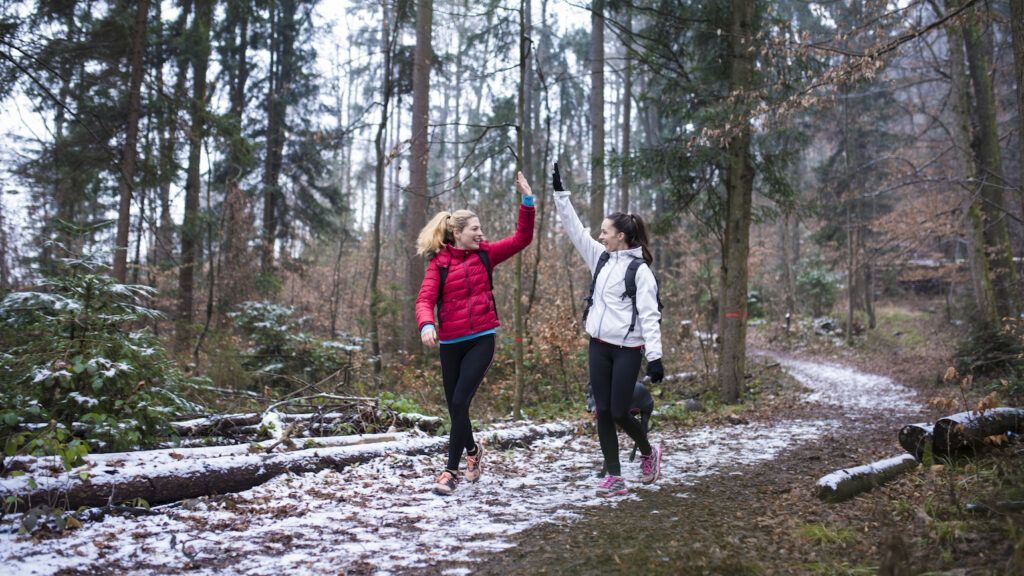“There’s no such thing as bad weather,” goes an old saying, “only bad clothing.”
Living in New England as I do, I am committed to the truth of this aphorism. Without it, we would be trapped indoors for most of the winter, missing out on the opportunity to fill our lungs with the bracing, beautiful, challenging air of deep winter. We’d miss out on the quiet, ethereal sounds of a snowy forest or the peace of a walk across the frozen ground of a field or park. And during the pandemic, we’d miss out on most of our chances to spend time with people we care about.
But let’s get real—none of this beauty and joy is possible without the right warm clothing. And when it comes to dressing for winter success, more is not necessarily…more.
There are three main rules I follow to stay warm—but not too warm—while enjoying the pleasures of nature in winter.
1) Warm Your Core
I’ve found that if the middle of my body is warm—my abdomen and solar plexus—I can tolerate cold temperatures for longer. I invested in a heated vest (powered by a rechargeable battery), which really does the job. But you can achieve the same effect by putting inexpensive hand-warmers in the pockets of a fleece or sweatshirt you’re wearing under your winter coat. I always visualize that inner warmth literally thawing my blood to help it flow smoothly through the rest of my body. This is an entirely un-scientific thought, but it’s a nice warming image on a chilly walk.
2) Flex Your Layers
Crucial to proper winter dress is the ability to change it up, to be flexible with how many layers you are wearing as you start to sweat or get a chill. This is all fine and good—until you find yourself walking down the trail holding an armload of sweaters and fleeces. Think about layers that can easily be folded into a backpack if you want a break from them. Many down jackets are warm, but thin because they’re made for layering. Thick cotton long-sleeved t-shirts or flannel button-up shirts are also easily pulled off and tucked into a backpack without weighing you down (which, ironically, would make you feel even sweatier!).
3) Protect Your Feet
As Lieutenant Dan told Forrest Gump in the movie, rule number one of staying safe in wet weather is to “take care of your feet.” The best socks for winter hiking are quick-drying, moisture-wicking and heat-preserving. That means cotton socks are a no-no, because they absorb sweat and hold the moisture next to your precious tootsies. Look for wool socks or synthetic hiking socks made of polyester or nylon. And be sure your boots are fully waterproofed!
How do you dress for winter walks?




